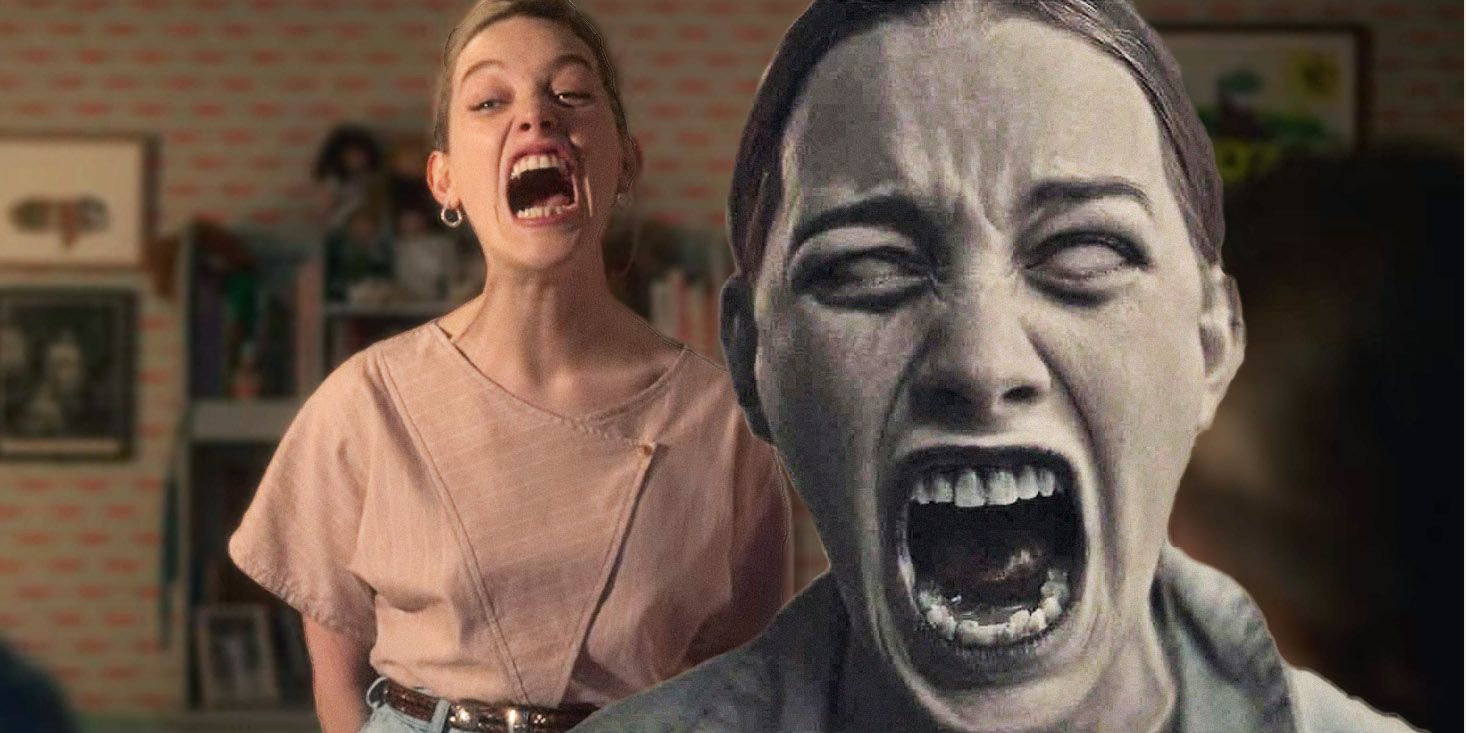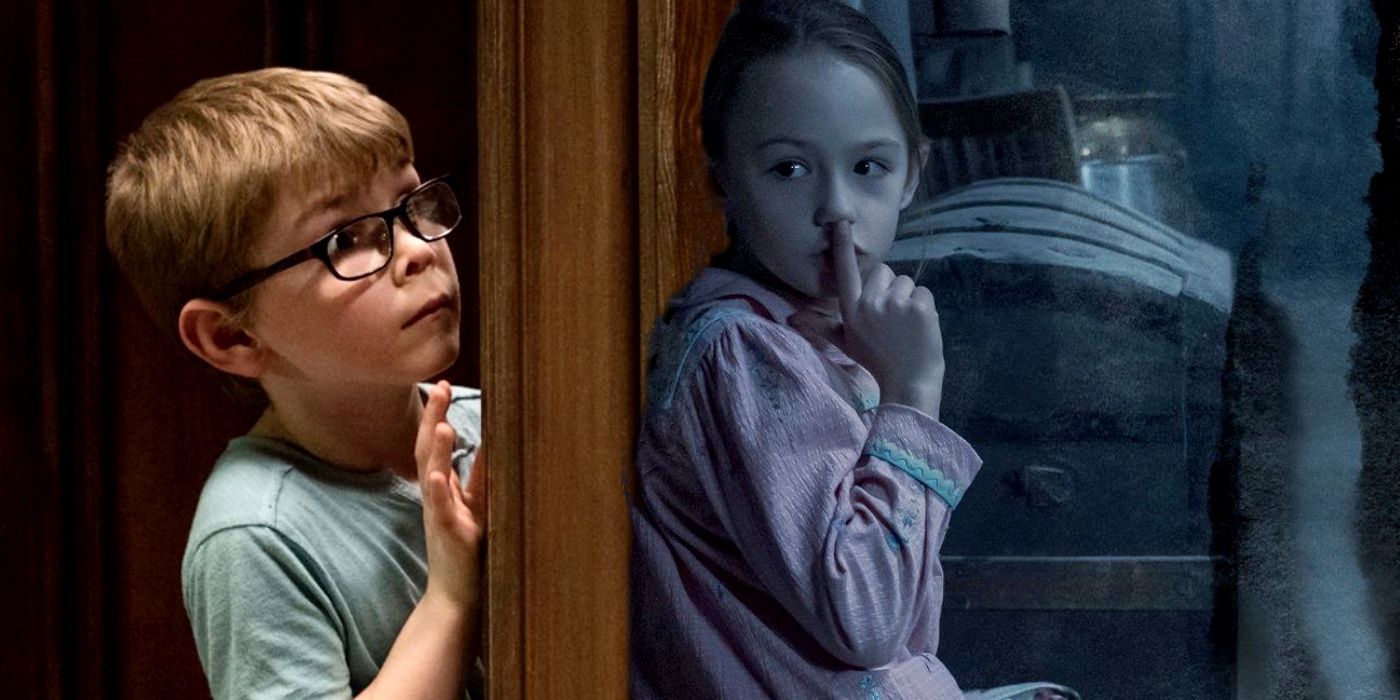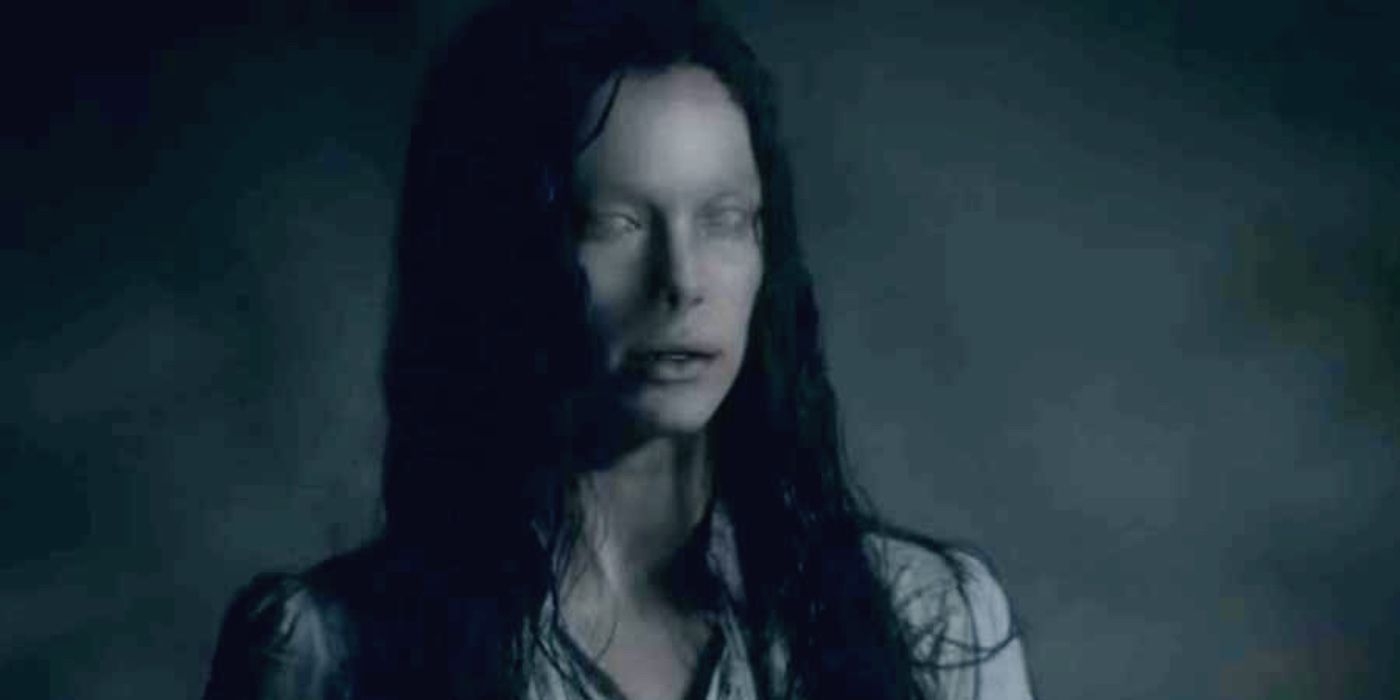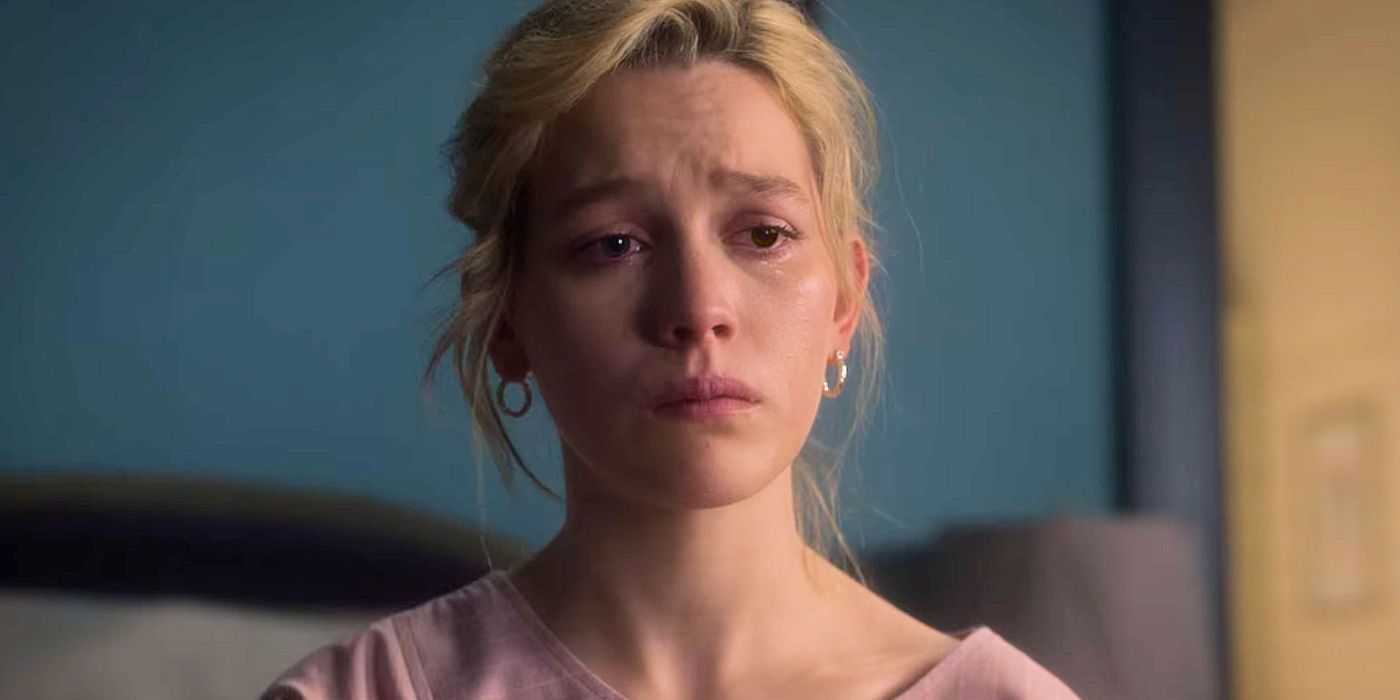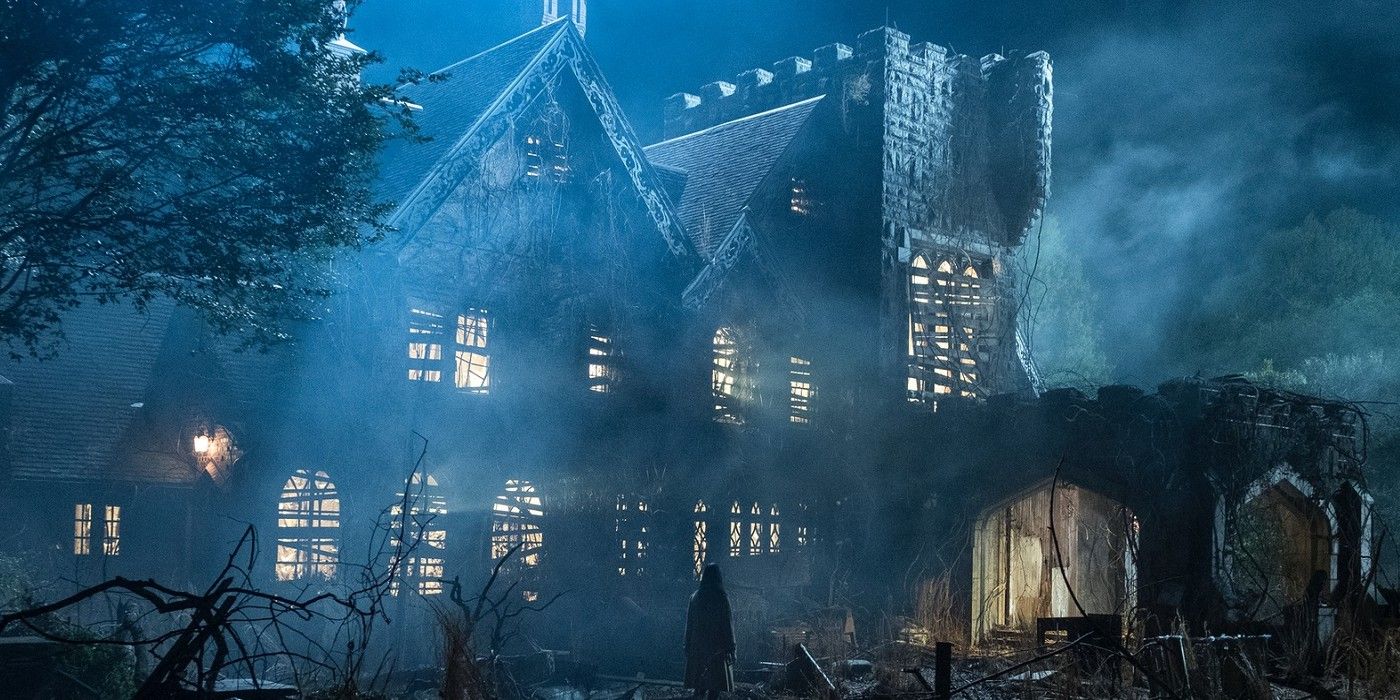Ghosts are central to The Haunting series, but they work differently between The Haunting of Hill House and The Haunting of Bly Manor. In each story, anyone who dies on the grounds of the titular home is cursed to remain there after that, but aside from that similarity, the ghosts from each show vary pretty differently from one another.
Both Hill House and Bly Manor are old-fashioned ghost stories. Hill House follows a family's stay in a haunted house and the trauma that follows them for years and the ghosts in that season are mysterious and vengeful. Bly Manor tells the story of a young woman named Dani who accepts a job as an au pair to orphaned children Miles and Flora. Dani realizes that the house is off, and more shockingly that it's full of ghosts, but the spirits that reside in Bly Manor have a little more depth than those in Hill House.
The ghosts in both seasons of The Haunting series both represent emotional trauma, but the details surrounding the afterlife are what set each story apart from one another. Each season of the show paints a different picture of their resident ghosts to complement the tragedy that is central to each story. But Bly Manor's ghosts are more complicated than the ones in Hill House, and here's why.
How The Ghost "Rules" Work in Hill House and Bly Manor
Hill House and Bly Manor share something important in common — anyone who dies on the grounds remains on the grounds after death. The ghosts in Hill House are more similar to those of typical horror lore. They die and sometimes they haunt the residents of Hill House, and other times they simply lurk in the dark corners of the house. Ghosts are trapped there because the house is a flytrap for evil and crucially, they tend to understand that they have died and accept that fate.
With Bly Manor, creator Mike Flanagan complicates the rules somewhat as ghosts are trapped at the manor because of the gravitational pull of one vengeful spirit — the lady in the lake. In a departure from the "rules" of Hill House, not every ghost that resides in Bly Manor realizes they are a ghost as people who die there tend to go through a phase of denial. Because of that, they experience something referred to as dream hopping, which is when a ghost subconsciously falls through the memories of their life. This happens when they begin to slip away and lose their sense of self. The presence of each ghost in Bly Manor serves a specific purpose.
Hill House's Ghosts with Faces Vs. Bly Manor's Faceless Ghosts
Bly Manor gives its ghosts a physical characteristic unlike those in Hill House. Bly Manor adds faceless ghosts. The latter season of the Haunting has ghosts far older than those in Hill House, with some dating back to the 17th century. According to the mythology of the show, a ghost that's been around that long eventually forgets everything about their past life. When they do that, their facial features start to fade away. It's a physical sign that those ghosts have been dead for so long that they've completely forgotten who they are.
This is one of the more interesting elements of ghost lore that Flanagan adds to the show. The ghosts in Hill House are more frightening background pieces than anything, primarily because the first season is far more focused on its living characters. Bly Manor, of course, still puts the majority of focus on its living characters as well. But it pays far more mind to its ghosts than its predecessor did. For that reason, fleshing out the origin stories of its spirits was necessary. The Haunting series is all about haunted people and the faceless ghosts may be the most haunted of all. They're still so wrapped up in an element of their earthly life that it consumes them and literally eats away at their body.
How Possession Works in Hill House vs. Bly Manor
The Haunting of Bly Manor goes deeper into the idea of ghostly possession than The Haunting of Hill House does. In Hill House, Crain family matriarch Olivia and daughter Nell are both taken over by the evil that fills in the house on separate occasions. They're not possessed by any particular spirit per se, but the abundance of evil energy in the home causes both of them to go mad. That's because the ghosts in Hill House cause hallucinations in their victims, getting inside their heads and convince them to kill themselves. Possession in Hill House isn't quite as straight forward since the ghosts are used more as metaphors in the show.
In Bly Manor, ghosts have the ability to directly possess someone. The method is passed down from the original ghostly resident of Bly Manor. The spirit in particular must find a willing host and have them speak the words, "It's you, it's me, it's us" to invite the ghost to share their body. As Bly Manor's tell-tale sign of possession, the host then develops heterochromia (two different colored eyes) to signify that two souls reside in that body.
Hill House is a straight-forward ghost story, but Bly Manor isn't necessarily. Its open-ended finale makes it unclear which events of the story actually happened and which were exaggerated. It's completely possible that the narrator of the story fabricated the idea of possession to cover for the heartbreaking purpose of her story.
Two Different Haunted Houses in Hill House and Bly Manor
The ghosts in Bly Manor are more complicated because their source is a little more complicated than Hill House. In the first season of the show, the house itself is evil, and as such it's a more traditional telling of a ghost story. When people die in Hill House, they become ghosts trapped there simply because the house is evil. Bly Manor, on the other hand, is not an evil place; rather it is full of love and happy relationships. But the death of its original resident Viola is why those unfortunate enough to die there remain trapped. Her anger and vengeance cursed the house, but it's eventually broken by Dani's loving sacrifice. Hill House is a haunted house through and through, meaning it will always trap those that die there as ghosts.
The ghosts of The Haunting of Hill House and The Haunting of Bly Manor are different from each other because they are meant to represent different types of emotional trauma. Each season may exist in the same horror series, but they are completely separate from one another. That means they need different ghosts. The Haunting season 3 will likely change the rules for its ghosts too, undoubtedly finding a new way to break its audience's hearts.

